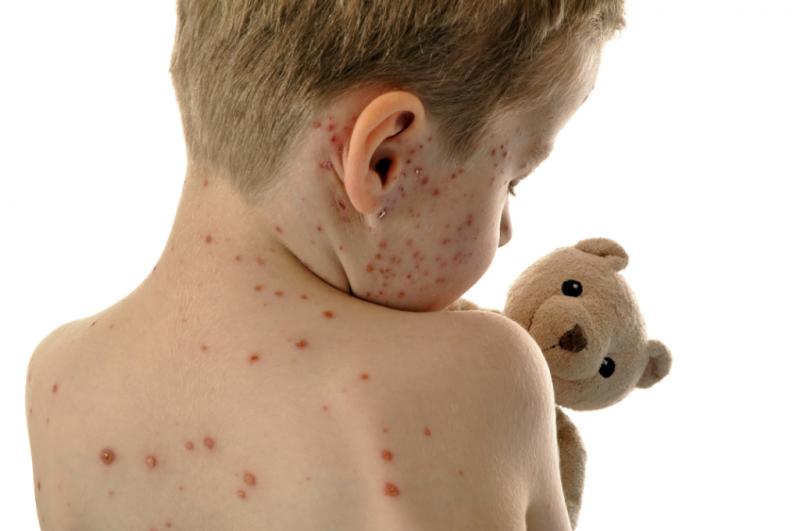How To Recognize Serious Illness In Children

A child getting sick is every parent's worst nightmare. Perhaps, you have been doing everything to the letter to ensure your child’s well-being, but something slips through the crack and affects your child. It could be somebody who recently visited or interacted with you and your child, sneezed, and touched your child's toy. Or, it could also be the food you prepared.
Whatever the reason may be, what's immediate and essential is to know the symptoms to look for and immediately attend to your sick child.
Recognizing Illness In Your Children
Any changes you see in your child must be noted. For instance, an increase in temperature shouldn't be ignored. Note that it’s not unusual to worry about your child. In fact, many health experts will tell you not to dismiss any symptoms you see, as they may signify a more serious health condition, and early detection can potentially save your child's life.
But if you're worried and need urgent care, you may take your child to medical facilities such as Idaho Falls Community Hospital for better assessment. In addition, an excellent relationship with your child's pediatrician is also advised. Pediatricians generally provide their contact numbers to parents, so if they need help, they can immediately contact their doctor for advice.
But of course, you also need to be able to differentiate what's a common illness from a serious one to help you prepare and take the appropriate steps to take care of your child. More so, to save you the anxiety of worrying should you encounter them.
To start, here’s a list of illnesses among children:
Common Illnesses Among Children
- Sore throat: When your child has a sore throat because of a virus, it would typically go away without treatment, but if it's due to a bacteria, your child may need to have a round of antibiotics to treat it.
- Ear infection: Children can acquire this from swimming, called 'swimmer's ear.' You may notice your child tugging in their ear because of itching or clogged ears, having difficulty in sleeping, or in advanced cases, they may also suffer a fever. Your doctor may recommend an antibiotic since this could be due to a bacterial infection.
- Influenza: This illness usually comes with the season. The symptoms include fever, sore throat, body aches, chills, and fatigue. It would be best to have the annual flu shot to prevent this. Though the flu shot will not guarantee your child total immunity from the influenza virus, it can help reduce the symptoms' severity and duration.
- HMFD or Hand Foot and Mouth Disease: HMFD is a very contagious viral infection, and your children may get it when they’re out on the playground with other kids. It is common in children younger than five years old, though some older kids and even adults get them. The symptoms are similar to flu but with the presence of skin rash.
- Conjunctivitis: Also called 'pink eye’, this infection or inflammation is contagious, and could either be due to bacteria or viruses. It will turn the eyes red and itchy and may have a discharge or swelling.
- Gastroenteritis: This is caused by a virus and could make your child nauseous, vomit, and experience diarrhea. To prevent the risk of dehydration, plenty of fluids and oral rehydration salts are recommended. It would also be best to give your child plenty of rest.
Fever in a child or even in adults is one of the common symptoms of a disease. Fever is one of the ways your body tells you it's fighting an infection within.

Serious Illnesses Among Children
- Kawasaki disease: This disease mimics many infections, and it takes a longer time to diagnose. If left untreated, it can severely damage the heart's coronary artery, resulting in cardiac arrest and death. Until this day, the cause of the disease is unknown. But effective treatments such as the administration of immunoglobulin and aspirin were already utilized successfully.
- Chickenpox: Fever and rash that is itchy and uncomfortable are usually the signs of this disease caused by the varicella-zoster virus. Chickenpox is not too common now because of the available vaccine administered to younger children. Still, it may cause severe complications and lead to pneumonia and bacterial skin infection if not attended to.
- Measles: High fever, runny nose, and a rash all over the body can develop once your child acquires the rubeola virus. It is an acute viral illness that, when ignored, could be fatal. Though there is a vaccine for this, those who refuse to get their children vaccinated may begin a sporadic outbreak in a community, making the virus linger and have a living host to attack.
- Mumps: The illness begins with mild symptoms but can escalate into painful swelling of the salivary glands. If left untreated, severe cases of mumps could lead to meningitis, hearing loss, heart problems, or even death.
- Rubella or German measles: This is an entirely different virus from rubeola though it presents similar symptoms. When a pregnant unvaccinated woman acquires this, severe and fatal congenital disabilities can happen to the unborn child. This illness can also be avoided with vaccination. And typically, the vaccine is a trio called MMR or measles, mumps, and rubella vaccine given to children aged nine months to fifteen months.
- Meningitis: This happens when there is an inflammation of the tissue surrounding the spinal cord and the brain. Serious permanent outcomes can result from this illness and may render a child deaf, with brain damage or even death.
As a parent, you want to do anything it takes to help relieve your child from any pain or discomfort they may be feeling, more so, to help them heal and recover faster. With that, here are some signs to recognize serious illness in your children.
- Change In Behavior
Suppose your typical energetic child is now sitting all day in the corner. Or perhaps, they’re usually chatty and bubbly but suddenly become quiet or distant. Or maybe you’ve noticed an unusual sleeping pattern. As a parent, you know your child very well, from their birthmark to their usual quirks. And so, behaviors that could be out of the ordinary may indicate that something’s wrong or they’re feeling unwell to go on with their day the usual way they do.
If you observe such unusual behavior, consider talking to them and asking what's wrong. Moreover, contact their pediatrician or take them to the nearest emergency room to find out what might be wrong and get the proper medical treatment.
- Pale Blotchy Skin
One of the physical symptoms to watch out for is pale and blotchy skin. Once you’ve noticed such indications, take their temperature and if it is higher than the normal range, take your child to a doctor. Mottling on a child's skin may be an early symptom of meningitis.
- Rash That Won't Fade
A rash that won't fade on the skin's surface after you press them down could be a sign of sepsis. Sepsis is life-threatening, and you need to immediately bring your child to the hospital for immediate treatment. Sepsis is an infection that can quickly spin out of control if not attended to. The child may suffer from tissue damage and organ failure when they reach the stage of septic shock and die.
Children with a weakened immune system and babies under one year old born prematurely or born from a mother who had an infection while pregnant are the most susceptible to getting sepsis.
- Change In Eating Patterns
When you know your child hasn't eaten for an extended period yet remains to refuse any food you offer, even their favorite ones could signify something wrong inside.
Trust your instinct because you know your child very well and what excites them. So, if you don't see their eyes light up after showing them their favorite dish, it might be time to visit their doctor.
- Very Little Urine
Suppose your child is still in their nappies, and it has been a while since you changed them last, and the diaper is still light and not drenched as you would expect. It could be a sign your child is severely dehydrated, which could be fatal. And with that, you need to rush them to the hospital before more severe complications could occur.
- Dull Eyes
If your child's eyes are not the typical sparkly and bright eyes that would welcome you when you greet them, it could signify that they may not be feeling well and something is wrong.
- Difficulty Breathing
You will immediately notice if your child has difficulty breathing if they make an effort and heave their chest when they breathe. In some cases, they may also grunt to breathe, and perhaps, you observe their nostrils flare and their lips purse.
You may also notice that they take short pauses to breathe, and their ribs move exaggeratedly. This could be a symptom of pneumonia or bronchiolitis. And more so, any signs of breathing difficulties should be considered a red flag that indicates you need to take them to the hospital.
- Incessant Crying
Young children cry all the time. But an unusual cry from your child or a whine that you've heard the first time could signify something serious. This can also be true when you can't soothe your child after giving them everything you thought they'd like.
Since most young children can't articulate what they feel, their cries could be the closest sign you can get that something’s wrong with them. There could be something giving them pain or making them uncomfortable besides a wet nappy and hunger.
- Seizure
When your child's body shakes uncontrollably, and their eyes roll backward, they might be having a febrile convulsion. Though this happens when a child has a fever, bring your child to the hospital if you feel uncomfortable with it. Occasionally, febrile convulsions can be triggered by a viral infection causing fever.
Wrapping Up
Your child is one of your most precious treasures, and as a parent, you only want what's best for them. Anything that you feel is out of the ordinary is worth looking into. After all, it’s their health and safety.
With that in mind, hopefully, this article has offered insights that you can use when caring for your child’s well-being.
More to Read:
Previous Posts:








